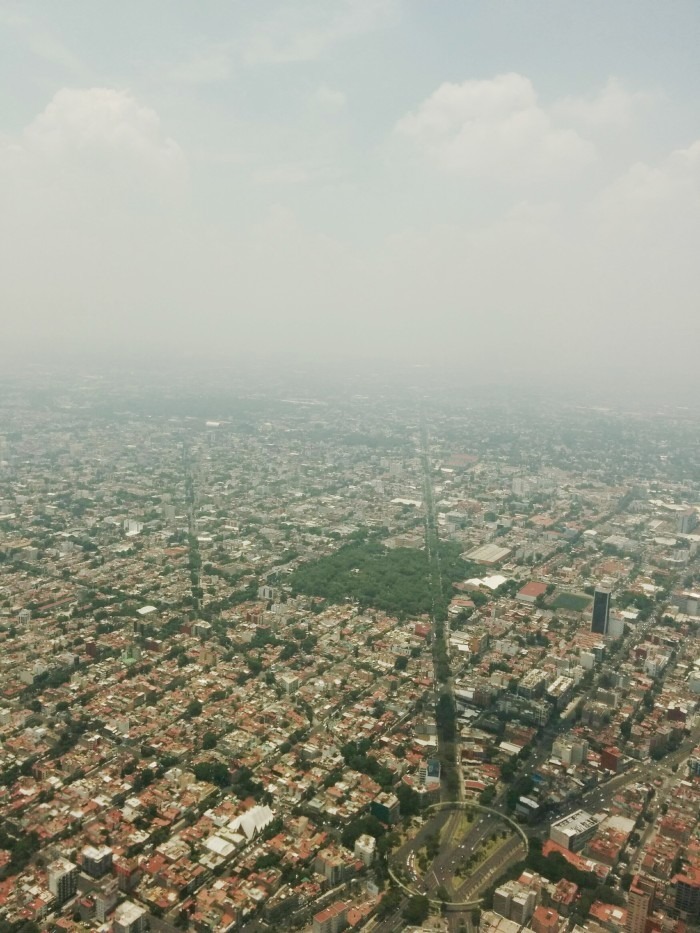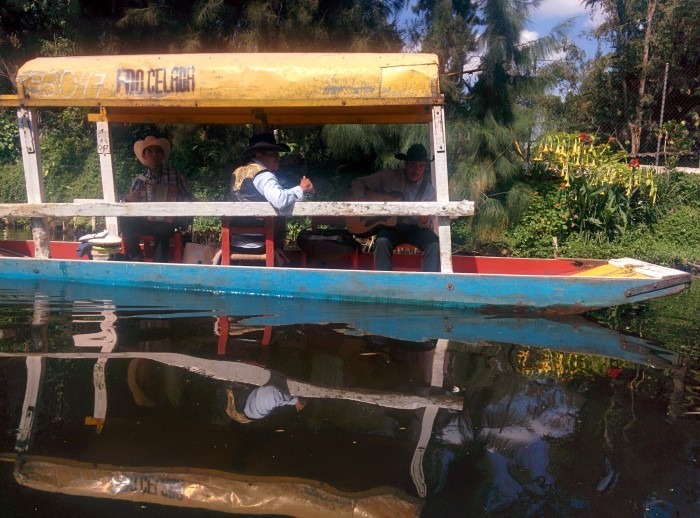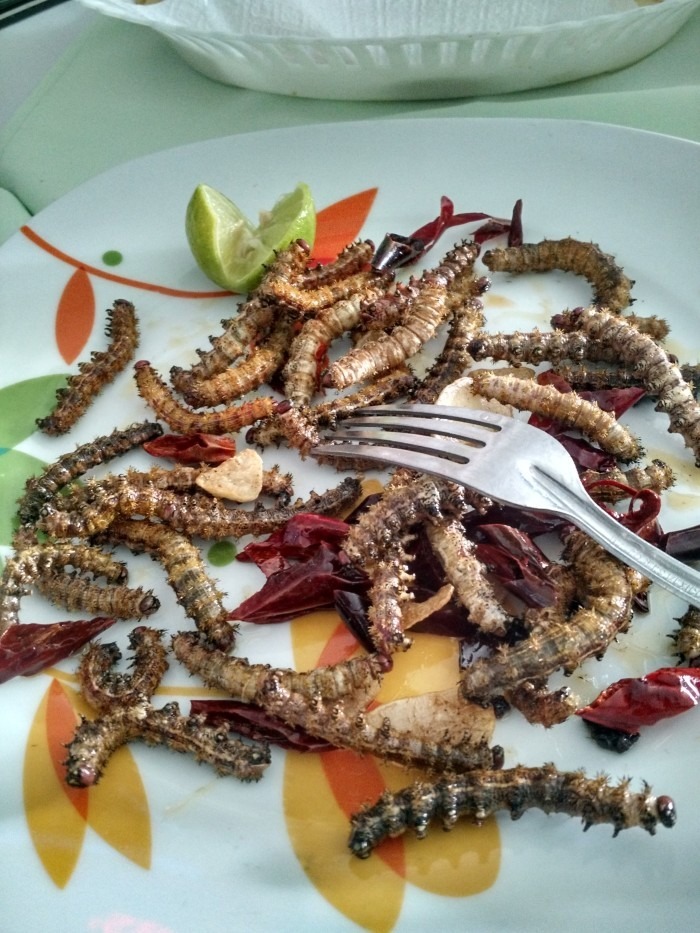Danny Mena's Guide To Eating In And Around Mexico City
Danny Mena is executive chef of New York City's Hecho en Dumbo. After stints at acclaimed restaurants Blue Hill and the Modern, Mena started his own restaurant as a small three-day-a-week offering in a friend's Brooklyn bar in 2007. Quickly outgrowing that space, he opened the current East Village location in 2010. Here, he writes in to Food Republic about a recent monthlong trip to Mexico City — where he was raised — with stops in Puebla, Oaxaca, Durango, Morelos and Guerrero.
Summer in Mexico is about as good as it gets. Southern Mexico really has two seasons: rainy and dry. The rainy season starts in June and doesn't let up until about October (though I did get rained out on my birthday one November), then the rains cease and the green, lush lands turn dry and arid. I enjoy so much the contrast between these two landscapes and how unique each is, so when we landed in Mexico in early August, you could only imagine how green and lush the country was. Mexico City is a behemoth, and though I was raised there, there are many parts that are still just fables to me.
Mexico City

Like New York, Mexico City is a sophisticated melting pot. You can sample cuisines from all over the world, and, of course, from all over the country. As soon as my wife and I arrived, we left our bags in our apartment in La Roma, now the hippest neighborhood in the city, and went to El Parnita. This ultra-cool restaurant has a simple menu of tacos, but they are really quite special in their simplicity. We of course got its namesake, "el viajero parnita," slow-roasted pork loin smothered in salsa macha.
In El Centro, there are a lot of good little restaurants, and in the same vein that many city centers are repopulating in the U.S., Mexico is going through this type of transformation. Not only do you have the old institutions like Café Tacuba, which makes the best café con leche, or El Cardenal, which is known for its pre-Hispanic food, but you also have new modern restaurants like Azul Histórico, by chef Ricardo Muñoz Zuirta. We had amazing chiles en nogada there, as the season for fresh walnuts and pomegranates is upon us. Close to the centro, there is another restaurant called Bravo Lonchería that is re-envisioning the torta — the Mexican sandwich — making pambazos with octopus, or stuffing them with stuffed huauzontle. (Double-stuffed!) Huauzontle are native to Mexico, resemble broccoli or rapini and taste similar to spinach or watercress. Super good.

Sometimes, the best food is found in unexpected places. In Xochimilco, on the southern end of the city, on a trajinera (a long flat boat), a "restaurant" paddles up and offers quesadillas, tacos and beers. We ordered up an array of quesadillas of chicharrón prensado (stewed pork rinds with a chile guajillo salsa), flor de Calabaza and huitlacoche. Being that it's summer, it's all in season, and nobody skimps on the ingredients.
Puebla

We all know that Puebla has a culinary depth that is rivaled only by Oaxaca and Yucatán. As we went in search of mezcal — locals have been making the smoky agave spirit for hundreds and hundreds of years — we of course need to fill the gap in the belly that mezcal opens up. In a small town in Zapotitlan, we had some amazing food at a restaurant called Itandehui. The place focuses on pre-Hispanic food, so there is a good selection of bugs: cacayas, gusanos and escamoles, to name a few. We went with the cacayas and chumiles. The cacayas are basically caterpillars, toasty and dry, while the chumiles are water bugs. They were quite juicy even after being toasted — pretty incredible! We followed that with agave flowers with rice, and agave hearts with a spicy salsa Mexicana.
Of course, at the night's end, we ended up at a taco stand, eating standing up with grease and salsa dripping down our hands — the best flavor combinations of salsa and meat. The spot had some grilled spring onions, which I am always a sucker for, to load on top.
Oaxaca

Our quest to find some rare mezcals led us to, of course, Oaxaca. The southern part of Puebla and northern Oaxaca is considered the Mixteca region of Mexico, known not only for isolation, but for poverty. The people here are warm and welcoming, and they all opened their kitchens for us. We had amazing barbacoa — this version was chicken in a rich chili broth, with some fresh tortillas.

In Oaxaca, we went to a restaurant called Itanoni, which specializes in corn-based dishes. This restaurant really exemplifies how working with different types of corn and modifying the shapes of masa can make seemingly similar dishes actually completely different and distinct. We had tetelas, tacos, memelas, quesadillas. The restaurant also makes a champurrado, which is a chocolate and masa-thickened drink that was out of this world. Oaxacan chocolate is really in a league of its own.

The Oaxacan food scene is really escalating; there are a lot of chefs making amazing food and playing with tradition. We had a fantastic meal at Pitiona, where chef Jose Manuel Baños Rodriguez made some simple things like sopa de fideo with queso Oaxaca spheres that were out of this world; risotto with escamoles (ant larvae); a terrine of pork and native black bean; and a raw fish tiradito with a chile de agua salsa that I am still thinking about.
Zandunga, which focuses on cuisine from the Isthmus region, has sweeter moles and cheeses native to that region. There, we had an Oaxacan pupu platter, of course washed down with a nice mezcal.
Durango
After taking a quick flight to Durango, we traveled to Las Tierras Calientes, or hot lands, which it is both literally and figuratively. The north is not really known for its cuisine, more for its beef. As soon as we landed, we went to a large food hall that was known for caldo durangeño, a very hearty soup with dried beef, similar to that of jerky. I consider myself to have a hearty appetite — "de buen diente," as they say in Mexico — but after one bowl I was full for hours. In Durango, the locals have parrilladas of sorts, also called discadas, which are an array of grilled meats cooked on a steel disc that is typically used to till the ground. It makes the meats tastier than if they were just cooked in a pan!
There is also a small group of Menonites in northern Durango. They make a queso Chihuahua that they call "queso excelsior" that lives up to their fame as cheese-makers and pairs perfectly with a local mezcal.
Morelos

Morelos is where my father is from, a town called Cuautla. I have always had a fondness for the cuisine here, from the white pozole to the pipian to the albondigas con espinazo. We visited my aunt, who is an amazing cook and who reminds me how it really can be better to eat at home sometimes than to go to a restaurant. There is a type of salt-cured steak called cecina, which comes from a town called Yecapixtla that is renowned for it. Locals air-dry the beef that's used, and with the weather conditions everything comes together to make a cecina like no other region in Mexico. I brought a kilo back to my friends in Mexico City for a good old parrillada.
Guerrero

Our final destination was Guerrero; we were in Chilpancingo to taste some mezcal, then drove to Acapulco to enjoy a couple days on the beach with the family. Of course we went to Beto Godoy, an institution, to get a pescado a la talla. We chose a fresh grouper that was perfectly seasoned and cooked and washed it down with a cold beer, a nice way to say goodbye to Mexico!

